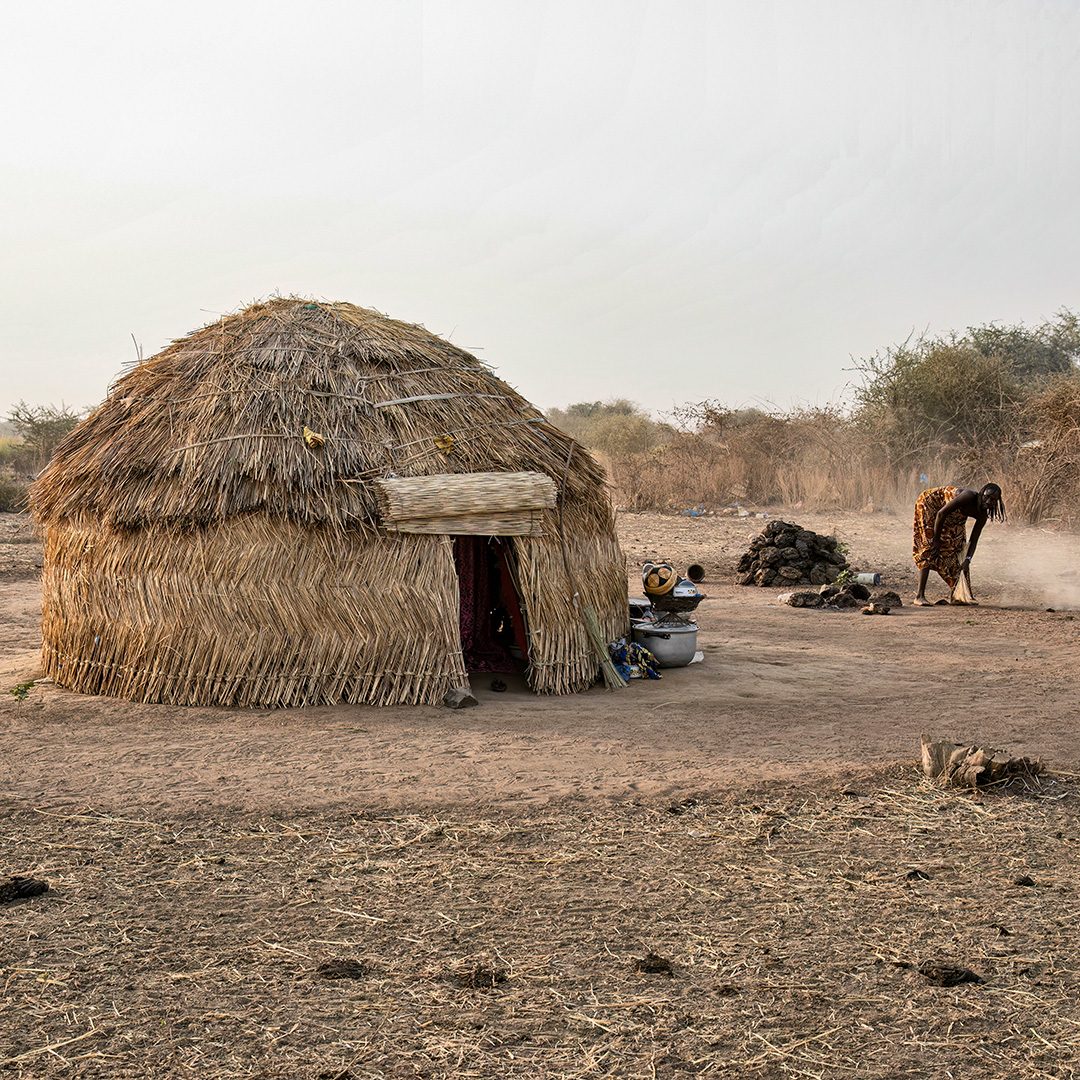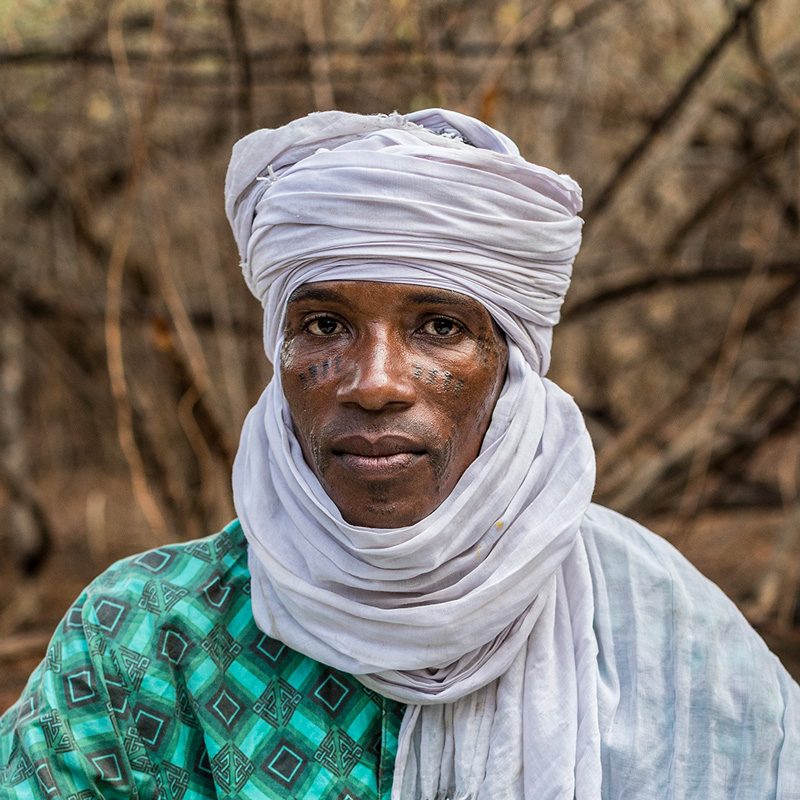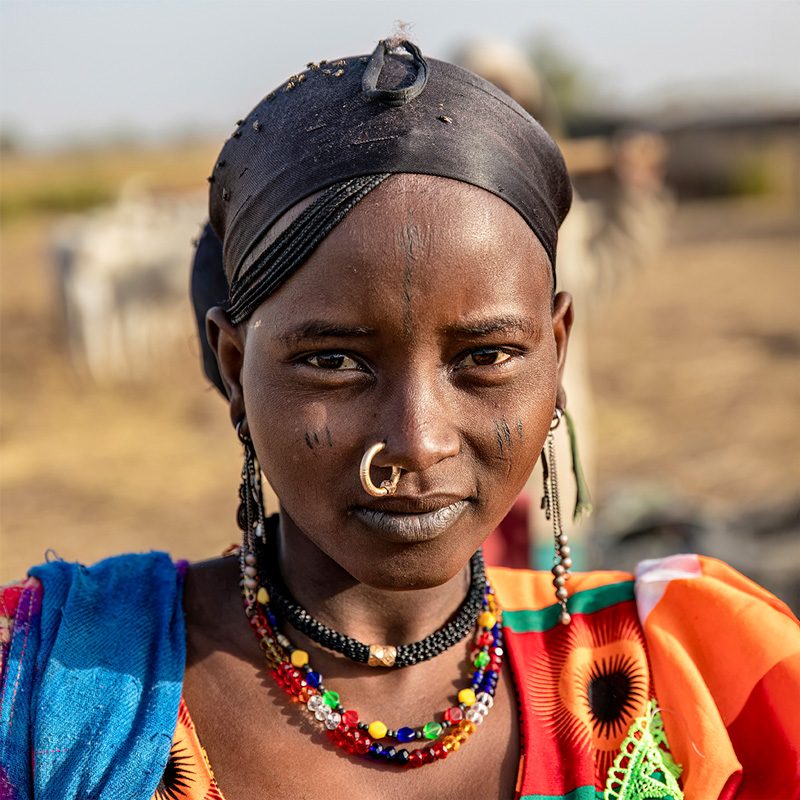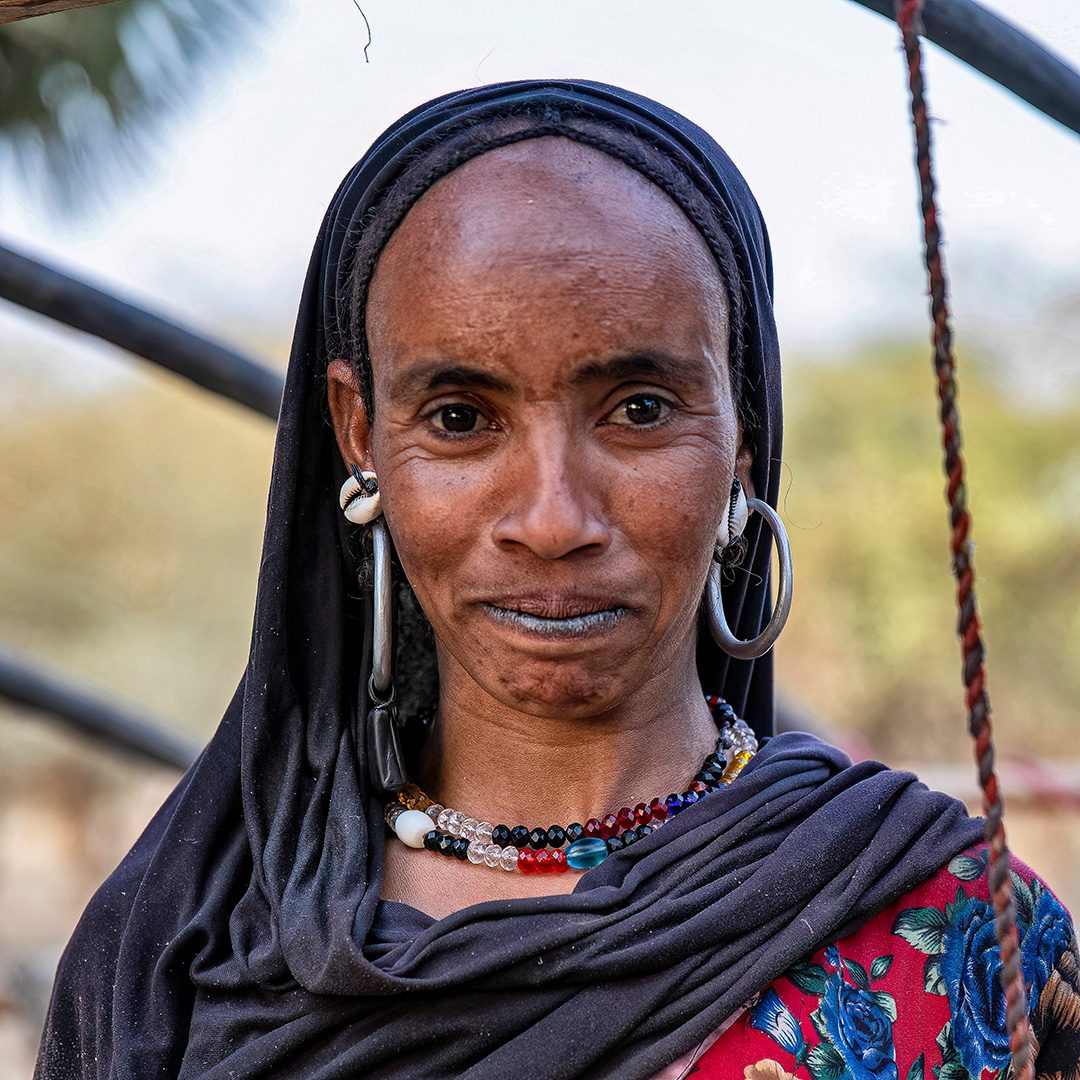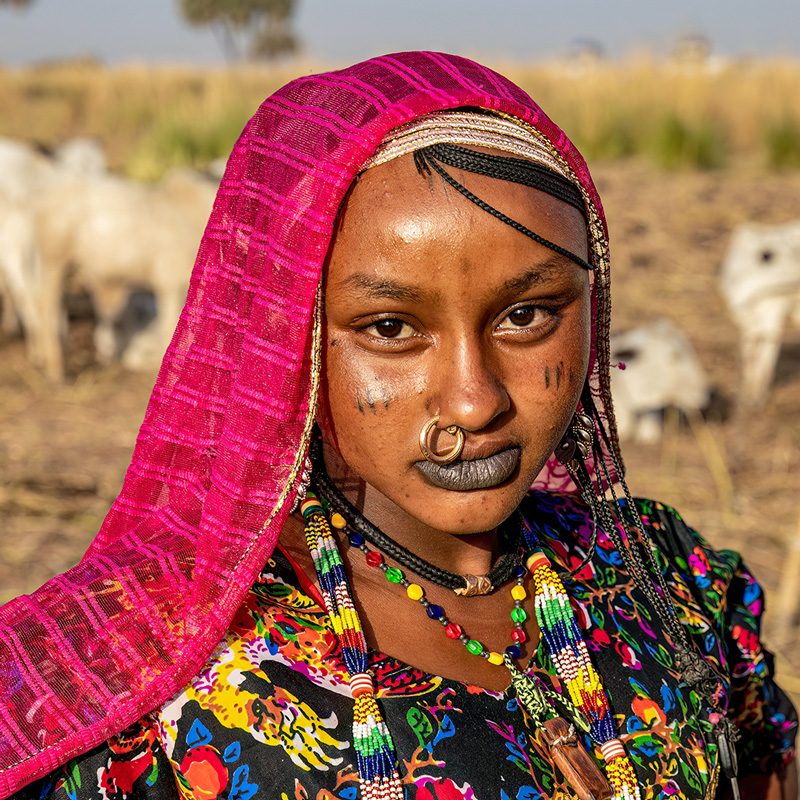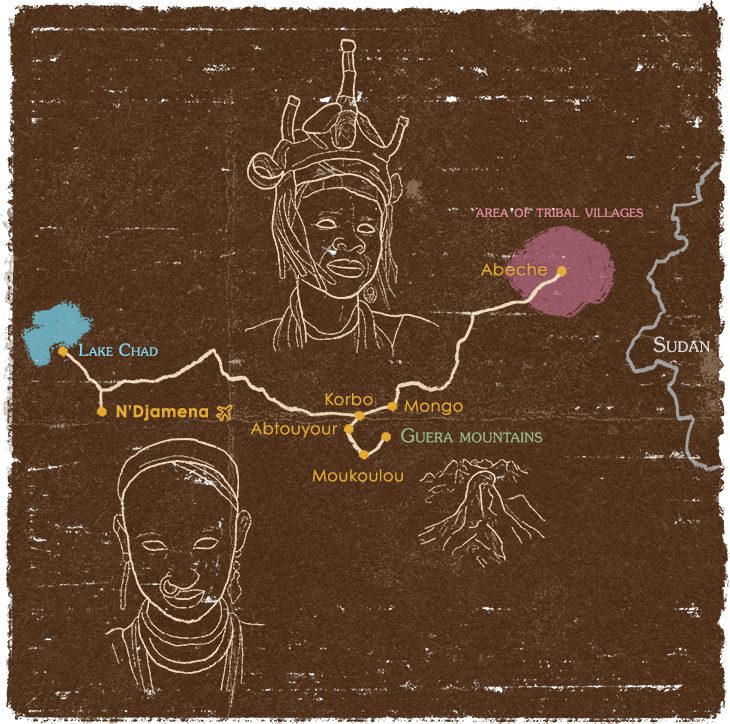Discover the highlights of this tribal trip to Chad
Lake Chad: Yayai Fulani and Buduma peoples between water and sand
Our tribal trip to Chad will begin in N’Djamena, where the city will serve as our gateway to the vast plains surrounding Lake Chad. In this remote region we will meet the Yayai Fulani, nomads who will continue to preserve ancient pastoral traditions. Their braided hairstyles, ritual pigments and powerful Gero dance will reveal an aesthetic rich in symbolism. We will also observe how this community blends beauty, spirituality and cultural resilience in a landscape shaped by wind and sand.
We will then travel to the islands inhabited by the Buduma, masters of fishing and lake life. Their floating villages, canoes and ancestral skills will show us a way of living entirely shaped by water. During this stage of our tribal trip to Chad, we will also visit Mbororo camps, renowned for their pastoral culture and deep connection with cattle.
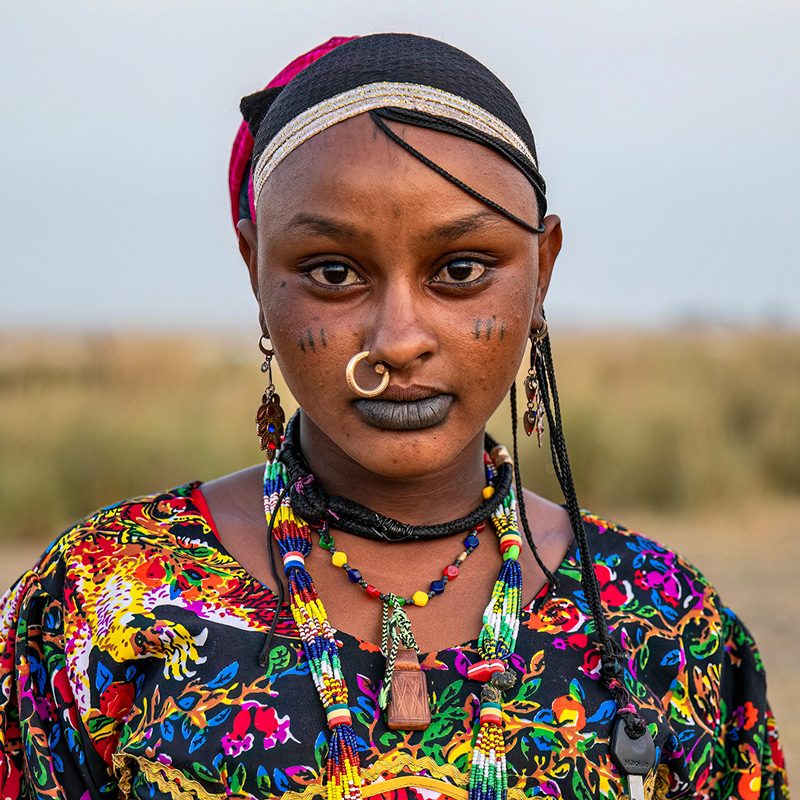
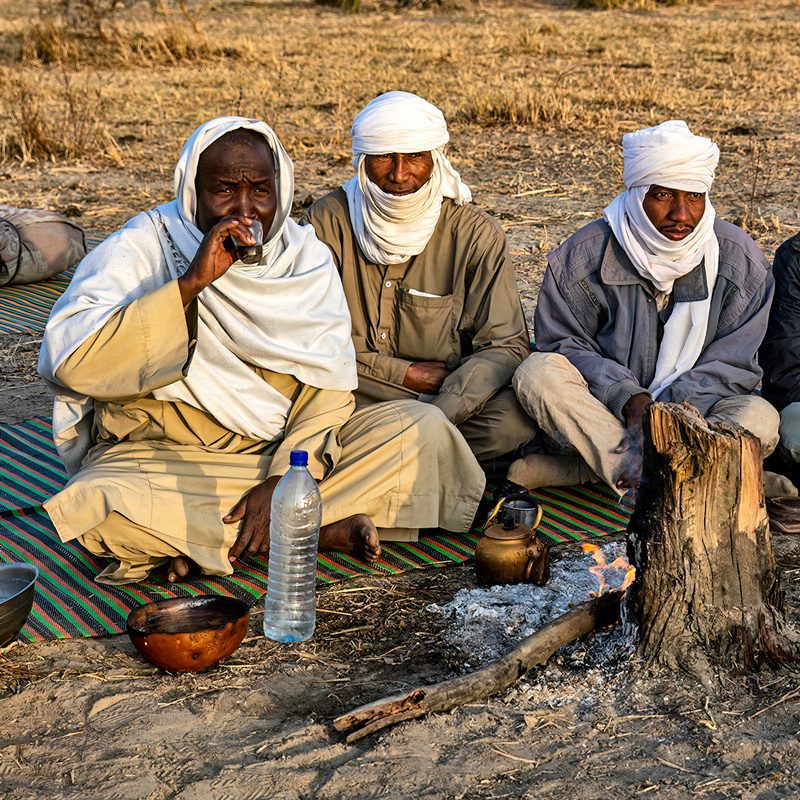
The animist heart of Chad: the tribal hills of Guera
After exploring the lake, our tribal trip to Chad will lead us into the animist world of the Hadjerai tribes. These communities sought refuge in the Guera hills in the 17th and 18th centuries to escape slave raids, and they still maintain a close relationship with their sacred mountains.
In Korbo we will meet Margai leaders and attend traditional ceremonies dedicated to ancestor worship. Later we will walk towards the mountain community of Moukoulou, where elders will preserve stories, rituals and knowledge tied to stone, water and agriculture. Vernacular architecture and local pottery will reflect the profound connection between these tribes and their territory.
Furthermore, during this tribal trip to Chad, we will have the opportunity to witness the Dangaleat dance and ceremony, a profound expression of communal identity involving music, trance and ritual offerings. This region will allow us to understand the animist spirituality that remains alive in the heart of Chad.
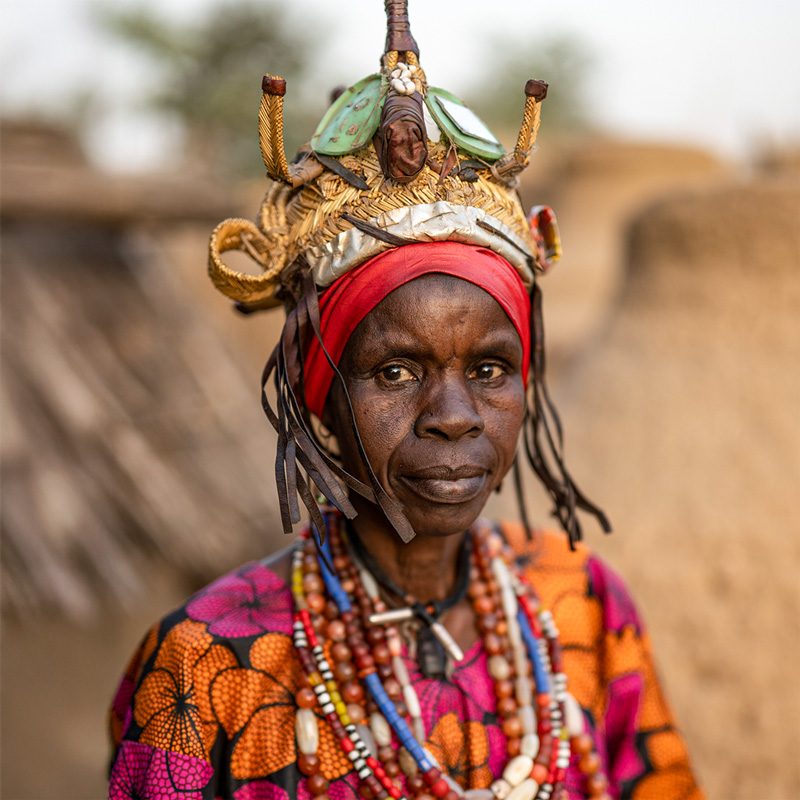
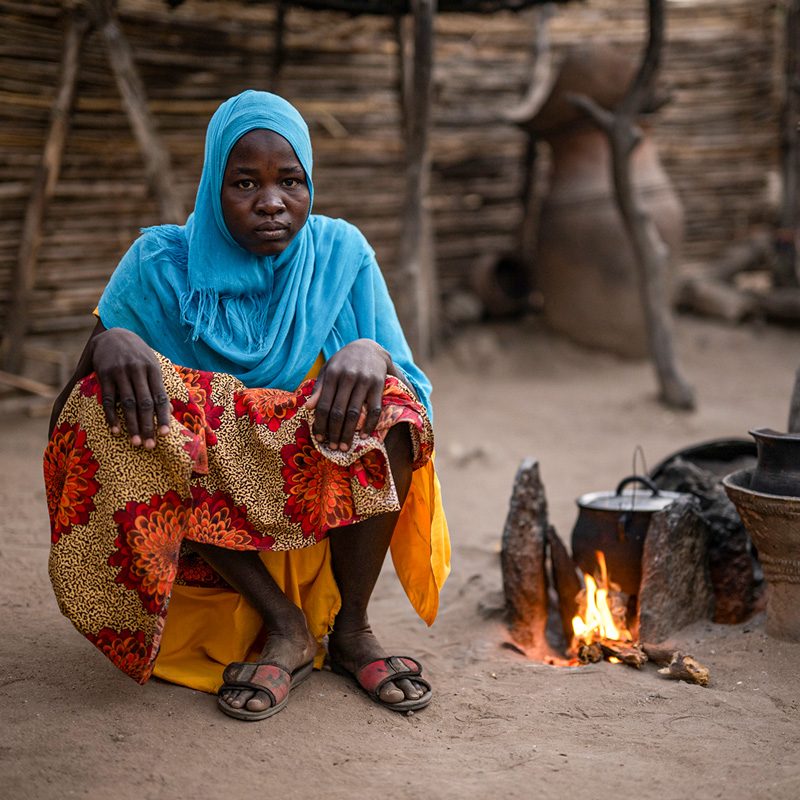
Mongo and the Wodaabe: aesthetics, pastoral life and nomadic identity
Our tribal trip to Chad will continue towards the town of Mongo, where we will encounter the Wodaabe, known for their refined aesthetics, beauty codes and pastoral traditions. Their painted faces, their relationship with cattle and their worldview will reveal a delicate balance between movement and belonging.
During this stage we will also visit a women’s collective producing traditional sesame oil, an activity that combines ancestral knowledge with the rhythms of the local economy. This encounter will offer an intimate look at daily life in the Sahel.


Abeché and the legacy of the Wadai kingdom
The tribal trip to Chad will then take us to Abeché, former capital of the powerful Wadai kingdom and a key stop along trans-Saharan trade routes. The city still preserves an Ottoman-era central market and neighbourhoods where the region’s caravan heritage and cultural diversity remain palpable.
From Abeché we will travel towards areas near the Sudanese border to meet communities deeply connected to the historic kingdom of Darfur. Here we will find the Zaghawa, semi-nomads with strong political influence and their own language; the Amdang, farmers and herders who maintain long-rooted Islamic traditions; and the Mararit, an agricultural people living between Sudan and Chad. Meeting these groups will help us understand the ethnic diversity that defines the east of the country.
We will return to Abeché to visit the Sultan’s palace and explore its popular neighbourhoods, where centuries of Saharan history can still be felt.
Returning to the centre of the country: Arab nomads and Sahel landscapes
Before concluding our tribal trip to Chad, we will travel back towards Mongo. Along the way we will meet camps of Red Arabs, nomadic groups who move with their herds according to the seasons. Their tents, hospitality and lifestyle will offer insight into yet another essential identity within Chad.
This final stage of the journey will allow us to understand how animist peoples, Arab nomads, lake communities and societies shaped by historic kingdoms coexist within the complex cultural mosaic of Chad.
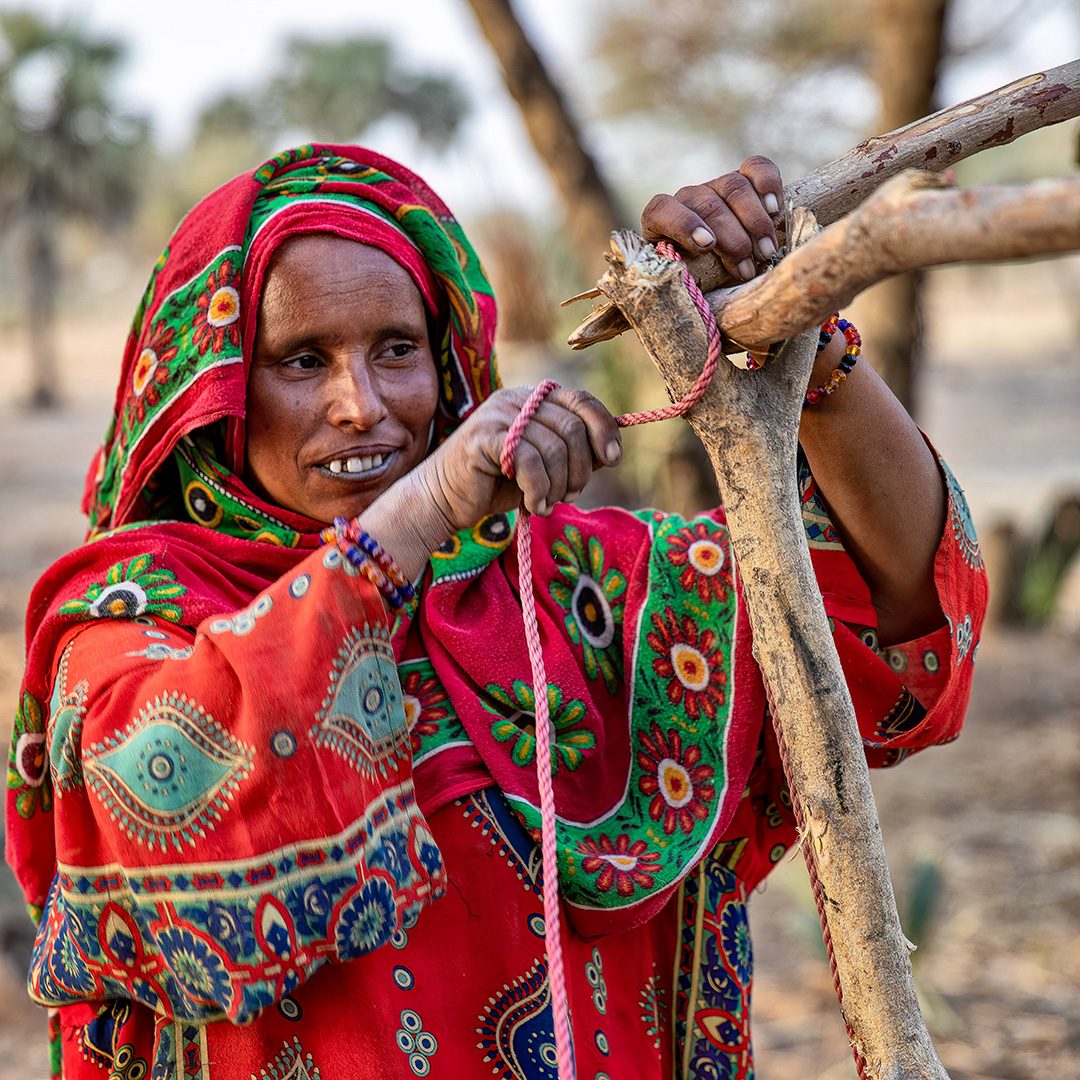
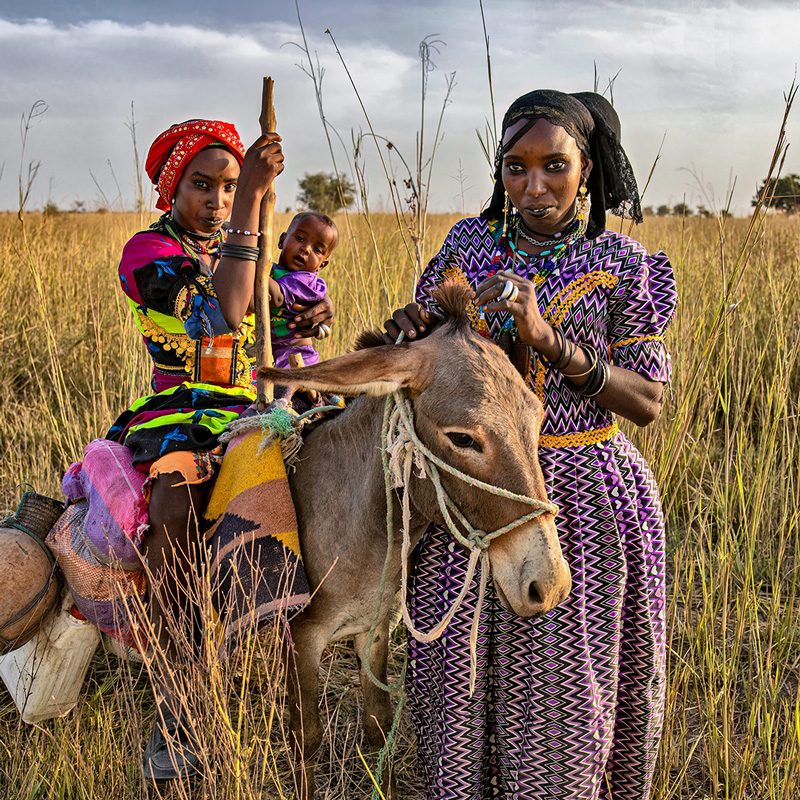
© Photos by Jordi Zaragozà Anglès, Markus Mauthe and Aníbal Bueno taken during a tribal trip to Chad.
► Download the itinerary for this tribal trip to Chad
Click on the button below to easily access the download form for this tribal trip to Chad.
